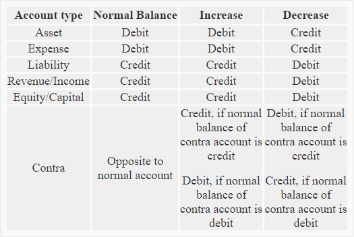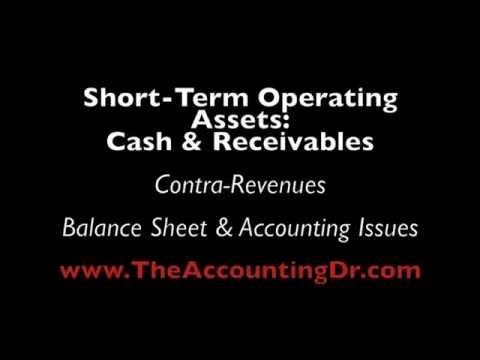
11 Financial may only transact business in those states in which it is registered, or qualifies for an exemption or exclusion from registration requirements. 11 Financial’s website is limited to the dissemination of general information pertaining to its advisory services, together with access to additional investment-related information, publications, and links. In order to keep the number https://www.quickbooks-payroll.org/ of accounts down to a manageable level, you may periodically review the list and close any accounts that are not fully utilized. For standardization purposes, many industry associations publish recommended charts of accounts for their respective sectors. Instead, each entity has the flexibility to customize its accounts chart to fit the specific individual needs of the business.
Liabilities – Non-Current Liabilities
For example, code 101 is used to record cash transactions, while code 201 is used to record accounts payable transactions. When recording transactions in the equity category, the double-entry accounting system requires that every transaction affecting equity must have a corresponding debit and credit entry. By properly classifying and recording expenses, businesses can analyze their spending and identify areas where costs can be reduced or eliminated.
Shake Your Business

The structure of the chart of accounts makes it easier to locate specific accounts, facilitates consistent posting of journal entries, and enables efficient management of financial information over time. For example, a well-designed chart of accounts makes it easy for bookkeepers and accountants to figure out which financial transactions should be recorded into which general ledger account. It also includes account type definitions along with examples of the types of transactions or subaccounts each may include.
Download a sample chart of accounts for construction
In a well-designed chart of accounts, that offset account is typically grouped with the accounts that receive the actual supplies and repairs expense. That way if actual supplies and repairs total $2,700 for the month, you can see at a glance that indirect cost was overapplied to projects ($3,000 applied, compared to $2,700 actual). Indirect costs are overhead expenses that relate directly to sales yet cannot be traced directly to a specific product or job. Examples include factory supervisor wages, incidental supplies (e.g., tape, glue, screws), machinery repairs, shop building insurance, etc.
- The remaining two are income or revenue and expenses, which flow into the income statement.
- There are a few things that you should keep in mind when you are building a chart of accounts for your business.
- High hedging costs often make this financing unaffordable to many of the least-developed countries and raises questions of debt sustainability.
- Many small businesses opt to utilize online bookkeeping services, not only for invoicing and expense tracking but also for organizing accounts and ensuring tax season goes smoothly.
Major Types Of Chart Of Accounts
No assurance is given that the information is comprehensive in its coverage or that it is suitable in dealing with a customer’s particular situation. Intuit Inc. does not have any responsibility for updating or revising any information presented herein. Accordingly, the information provided should not be relied upon as a substitute for independent research. Intuit Inc. does not warrant that the material contained herein will continue to be accurate nor that it is completely free of errors when published. Identifying which locations, events, items, or services bring in the most cash flow is key to better financial management. Use that information to allocate resources to more profitable parts of your business and cuts costs in areas that are lagging.

Fiscal Year Explained: How To Choose One For Your Business
For example, the balance sheet would include all of ABC Company’s assets, liabilities, and equity accounts, which are organized based on the categories in the COA. Equity accounts are important in determining the financial health of an enterprise. They are used to prepare financial statements together with the balance sheet and the statement of changes in equity.
To create a COA for your own business, you will want to begin with the assets, labeling them with their own unique number, starting with a 1 and putting all entries in list form. The balance sheet accounts (asset, liability, and equity) come first, followed by the income statement accounts (revenue and expense accounts). The main accounts within your COA help organize transactions into coherent groups that you can use to analyze your business’s financial position. In fact, some of the most important financial reports — the balance sheet and income statement — are generated based on data from the COA’s main accounts.
When setting up a chart of accounts, typically, the accounts that are listed will depend on the nature of the business. For example, a taxi business will include certain accounts that are specific to the taxi business, in addition to the general accounts that are common to all businesses. Charts of accounts are an index, or list, of the various financial accounts that can be found in your company’s general ledger. These accounts are separated into different categories, including revenue, liabilities, assets, and expenditures. As your business grows, so will your need for accurate, fast, and legible reporting. Your chart of accounts helps you understand the past and look toward the future.
Residential developers may be recognizing their income in this way, as they only get paid when a house sells. Once the overall structure of the chart is established, it shouldn’t change often. Accounts can be added as needed throughout the year, but any major changes are reserved for the start of a new fiscal year to avoid confusion. Revenue is the amount of money your business brings in by selling its products or services to clients. We provide third-party links as a convenience and for informational purposes only. Intuit does not endorse or approve these products and services, or the opinions of these corporations or organizations or individuals.
Account numbers can be three or four digits long and may include added numbers signifying divisions, depending on how the company is organized. Groups of numbers are assigned to each of the five main categories, while blank numbers are left at the end to allow for additional accounts to be added in the future. Also, the numbering should be consistent to make it easier for management to roll up information loan versus lend of the company from one period to the next. Assets are resources your business owns that can be converted into cash and therefore have a monetary value. Examples of assets include your accounts receivable, loan receivables and physical assets like vehicles, property, and equipment. Looking at the COA will help you determine whether all aspects of your business are as effective as they could be.
Current assets are those that can be converted into cash or used up within one year, such as cash and inventory. Non-current assets are long-term resources, such as property, plant, and equipment. This classification https://www.simple-accounting.org/political-ideologies-in-the-united-states/ helps businesses assess their liquidity and long-term financial health. The required increase in clean energy investments in the NZE Scenario is particularly steep in many emerging and developing economies.
